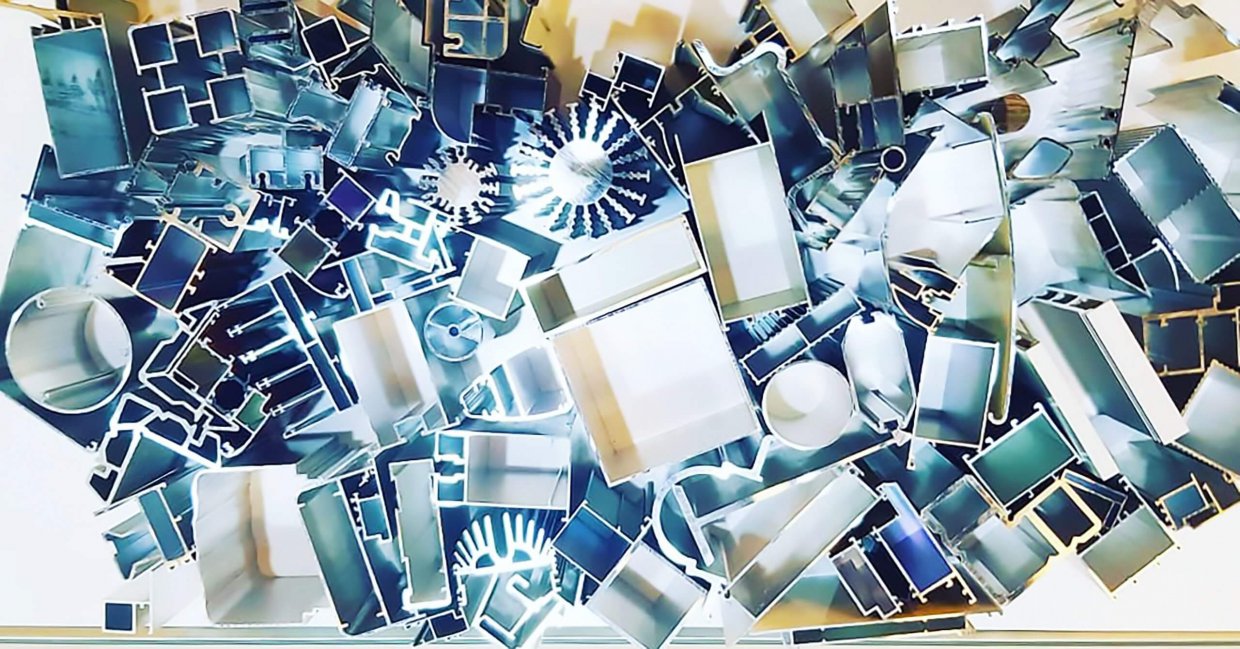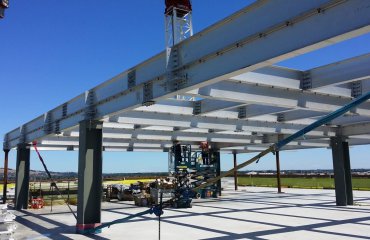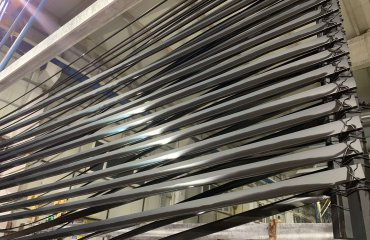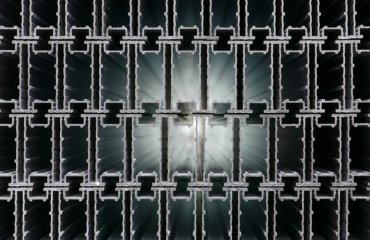ALUMINUM SPECIFICATION OF ALLOYS
Aluminium specification of alloys
| TYPE OF ALLOY | ALLOYS AVAILABLE | TYPE OF QUALITY | USES |
| Series 1xxx – Aluminum content at least 99% EN AW 1050 | ЕN AW 1050 EN AW 1060 EN AW 1100 |
Variety of 1st series alloys have a high level of corrosion resistance. They are not suitable for heat treatment and machining.
They have high electrical conductivity and flexibility. |
Fuel filters, electrical outlets, radiator pipes, decorative components, reflectors |
| Series 2ххх- Copper content between 0,7 to 6,8% | EN AW 2007 EN AW 2011 EN AW 2014 ЕN AW 2024 EN AW 2017 |
Series 2 offers alloys with high strength and hardness and good machining properties
Resistant to corrosion, but in worse weather conditions. They require additional coverage for maximum durability Difficult to weld |
Good for manufacturing machine parts, bolts and rivets
It is often used for hydraulic and pneumatic components.
The most suitable alloys for manufacturing parts in the military industry |
| Series 3ххх – Alloys with manganese content between 0,05 to 1,8% | EN AW 3003 EN AW 3004 |
The 3-series alloys have satisfactory strength with good durability under corrosion conditions. They provide good design prerequisites, but without the option of heat treatment. | Storage containers, beverage box, domestic appliances, heat exchangers, pressure vessels, exterior cladding of buildings and gutters |
| Series 4ххх – Alloy with silicon content between 0.6 to 21.5% | EN AW 4006 EN AW 4007 EN AW 4015 EN AW 4032 |
Adding silicon to aluminum also reduces the melting point and improves the liquid form of the alloy after this process.
These are the only alloys that can have an option for and without subsequent heat treatment |
Series 4 is mainly used for welding and soldering individual elements |
| Series 5xxx – Deals with a magnesium content of 0.2 to 6.2% | EN AW 5083 EN AW 5052 EN AW 5754 EN AW 5074 EN AW 5005 |
Alloys in this series have the highest degree of durability of alloys without the possibility of hot working. They also have very good readings when welding. | The mechanical properties of the 5 Series alloys give rise to their demand in the following industries: shipbuilding, transportation, pressure vessels, bridge and building construction. |
| Series 6ххх – Alloy with magnesium and silicon with about 1% content of both elements | EN AW 6060 EN AW 6012 EN AW 6063 EN AW 6262 EN AW 6026 EN AW 6005 EN AW 6082 |
The combination of magnesium and silicon provides durability to this alloy
Good for welding purposes. Corrosion resistance is good. This group of alloys is good for anodizing, in particular EN AW 6060 and EN AW 6063 for decorative purposes |
Suitable for designing tasks involving considerable machining and milling
Alloys such as EN AW 6060 and EN AW 6063 are mainly used for the production of windows, doors, interior decoration and others. EN AW 6082 is used in industries that require better mechanical properties of the metal. |
| Series 7ххх – Zinc alloy | EN AW 7075 | Very high strength and hardness. This alloy is extremely difficult to process and requires high-tech capabilities | Aircraft and the military industry |
Aluminum alloys name according to EN, DIN, WERKSTOFF N-R
LABELING AND SIGNIFICANCE OF HEAT TREATMENT
- BASICS:
F – no special control of heat treatment or hardening has been performed after shaping the product
O – annealed state – this state provides the lowest hardness and the highest ductility of the metal
H – drawn – only for plastically deformable products / rolled products. Used for products that have been hardened by heating to a low temperature after cold processing.
W – this is a hardening that is rarely used and is quite unstable. It is only suitable for alloys that have an aging process at normal temperature levels, having been hot-treated.
T – Used for products that have been tempered with hot work
__________________________________________
- T – TEMPER CODES
T1 – Cooled by elevated temperature during the molding process and by a natural aging process to achieve stable mechanical properties
T2 – Cooled by elevated metal temperature under which it is machined, cold machined and with natural aging for high stability
T3 – Hardening in an aqueous solution, cold-treated / pressed / and with natural aging of the metal for high stability
T4 – Hardening in aqueous solution with natural aging of the metal for high stability
T5 – Cooled by elevated temperature during the molding process and the process of artificial aging of the metal
T6 – Hot treated in a solution with an artificial aging process creating the highest strength and mechanical properties, but reduces the ductility of the metal.
T7 – hot treated in solution and stabilized, which leads to improved mechanical properties – strengthening
T8 – Hardening in aqueous solution and press for artificial aging
T9 – Hardening in aqueous solution, artificial aging and hardening of the press
- INDICATION OF HEAT TREATMENT FOR ROLLED PRODUCTS
FH – no mechanical properties required, cold machined – cold rolled products
OH / H111 – soft – cold rolled
H12 / H134 – ¼ hard – cold rolled
H22 / H234 – ¼ Solid – warm
H32 / H334 – ¼ solid – reinforced
H14 / H154 – ½ Hard – cold rolled
H24 / H254 – ½ Solid – warm
H34 / H354 – ½ solid – hardened
H18 / H194 – Solid – Cold Vacuum
H28 / H294 – solid – warm
H38 / H394 – hard – hardened
H19 / H1985 – very hard – cold rolled
Aluminium specification of alloys




